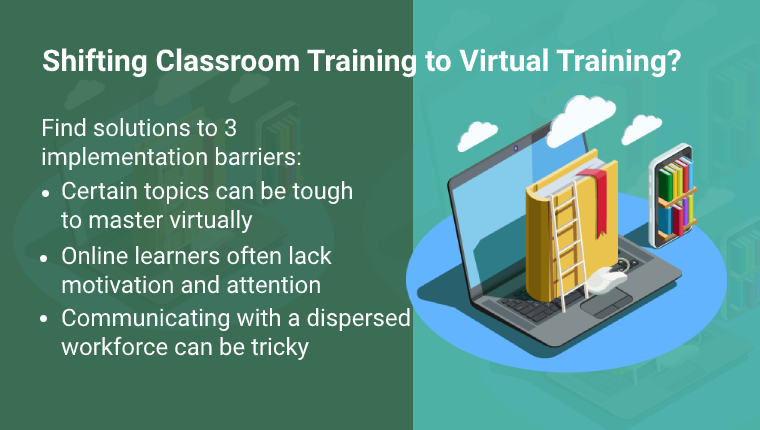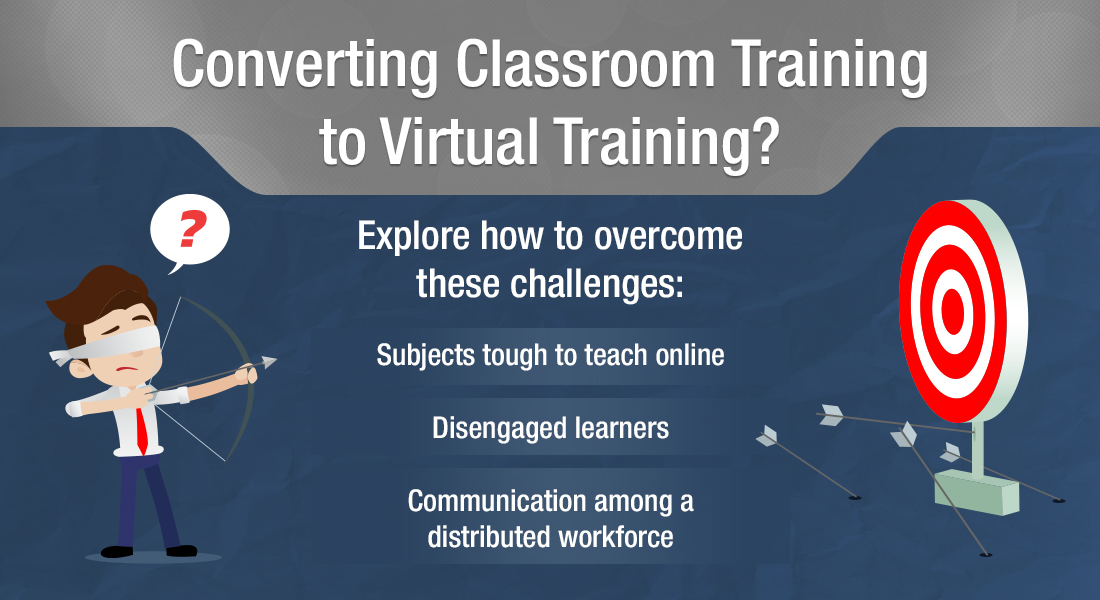How to Overcome VILT Challenges? Solutions for Virtual Training Success
Virtual training challenges? VILT offers solutions! Conquer challenges like engagement & tech issues. Discover strategies for successful virtual training.

T he remote work revolution has transformed how organizations deliver training. Virtual Instructor-Led Training (VILT) has emerged as a powerful tool, offering flexibility, scalability, and cost-effectiveness for Learning and Development (L&D) professionals. However, the virtual landscape presents unique challenges that can hinder the effectiveness of training programs. Let's address these challenges with data-driven solutions and best practices to ensure your VILT sessions are engaging and successful for L&D professionals in 2024 and beyond.
Why VILT is Dominating Corporate Training? (It's Not Just About Zoom)
Forget expensive travel and rigid schedules. Virtual Instructor-Led Training (VILT) is booming for a reason. Here's why:
- Cost-Effective: Slash training expenses with no travel or venue fees.
- Scalable & Flexible: Train large, global teams on their time.
- Engaging: Interactive elements keep learners motivated.
- Trackable: Monitor progress and measure success through VILT data.
VILT offers a powerful, modern solution for corporate training, making it a win-win for both businesses and employees.
What are the Common Challenges Associated with VILT (and Their Solutions)?
1. Bridging the Technical Gap
- Challenge: Technical difficulties like unstable connections, unfamiliarity with the platform, or bandwidth limitations during VILT sessions can disrupt the flow and frustrate learners.
- Solution: Conduct pre-session checks, offer clear platform tutorials, explore tools that adjust streaming quality based on learner bandwidth, and have a backup plan for technical glitches (e.g., pre-recorded sections, co-host for technical support).
- Additional Tips: Utilize cloud-based VILT platforms known for reliability and ease of use. Partner with IT support to ensure organizational firewalls don't restrict access to essential training resources.
2. Reigniting Engagement in the Digital Age
- Challenge: The lack of face-to-face interaction can lead to decreased participation, attention spans, and difficulty gauging learner comprehension.
- Solution: Microlearning Modules: Break down content into bite-sized chunks (5-10 minutes) to combat shorter attention spans. Interactive Activities: Incorporate polls, quizzes, breakout rooms, collaborative exercises, and whiteboarding tools to keep learners actively involved. Cater to Diverse Learning Styles: Integrate audio lectures, case studies, simulations, and visual aids to cater to different learning preferences.
- Additional Tips: Leverage gamification elements like points, badges, and leaderboards to foster healthy competition and boost engagement. Utilize audience response systems to collect real-time feedback and gauge learner understanding throughout the session.

How Can You Drive High Engagement in Your VILT Sessions? [Videos]
3. Minimizing Distractions in Learners' Environments
- Challenge: Learners in their home environments may face distractions from family, pets, work notifications, or multitasking.
- Solution: Pre-Session Environment Check: Encourage learners to designate a distraction-free workspace. Inform them about features like "Do Not Disturb" settings on communication platforms. Clear Learning Objectives: Communicate program objectives upfront to set expectations and enhance focus. Attention Tracking Technology (if available): Utilize features that provide insights into learner engagement and allow you to adjust your approach mid-session if needed.
- Additional Tips: Encourage learners to silence notifications on their devices during the VILT session. Consider offering flexible session timings to accommodate learners in different time zones who might be working remotely.
→ Ready to Transform Your VILT Sessions? Join Our Interactive Webinar -> Revamp Your Virtual Training: Proven Strategies for Engagement & Success
4. Building Rapport & Trust in a Virtual World
- Challenge: Establishing rapport and trust between the trainer and learners can be more challenging in a virtual setting.
- Solution: Encourage Webcam Usage: Promote the use of webcams to create a more personal connection. Informal Check-Ins: Incorporate informal check-ins throughout the session to gauge understanding and address concerns promptly. Collaborative Learning Projects: Assign group projects or case studies that require virtual teamwork to foster interaction and build trust.
- Additional Tips: Start the session with interactive icebreaker activities to help learners feel comfortable and establish connections. Use learners' names throughout the session and acknowledge their contributions to create a more inclusive environment.
5. Time Management & Pacing Mastery
- Challenge: Maintaining a clear timeframe and effective pacing can be difficult online, leading to rushed sessions or information overload.
- Solution: Chunking & Microlearning: Break down complex topics into smaller modules with short breaks in between. Visual Time Management Tools: Utilize on-screen timers or progress bars to keep the session on track.
Pre-record Transitions: Pre-record transitional segments or use screen sharing features to minimize dead time between activities.
Adaptability: Be prepared to adjust the pace based on real-time learner cues.
- Additional Tips: Plan pre-work assignments or short video learning modules learners can access beforehand to introduce key concepts and maximize VILT session time for interactive learning activities. Conduct post-session surveys to gather feedback on pacing and content difficulty.
Parting Thoughts
By implementing these research-backed solutions and best practices, L&D professionals can transform VILT sessions into engaging and effective learning experiences.
Want to learn how to overcome common VILT challenges and create impactful virtual training experiences that truly resonate with your remote workforce? Register to our upcoming webinar: "Revamp Your Virtual Training: Proven Strategies for Engagement & Success."
In this webinar, you'll gain insights on how to:
- Design instructional material
- Select the right technology platform
- Use suitable collaboration activities





